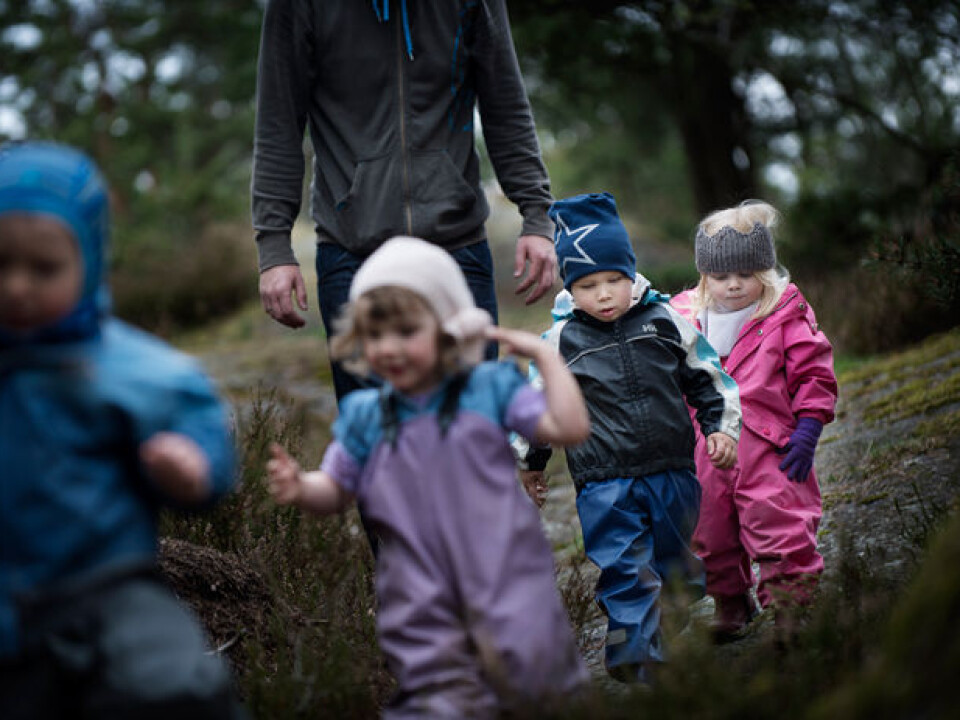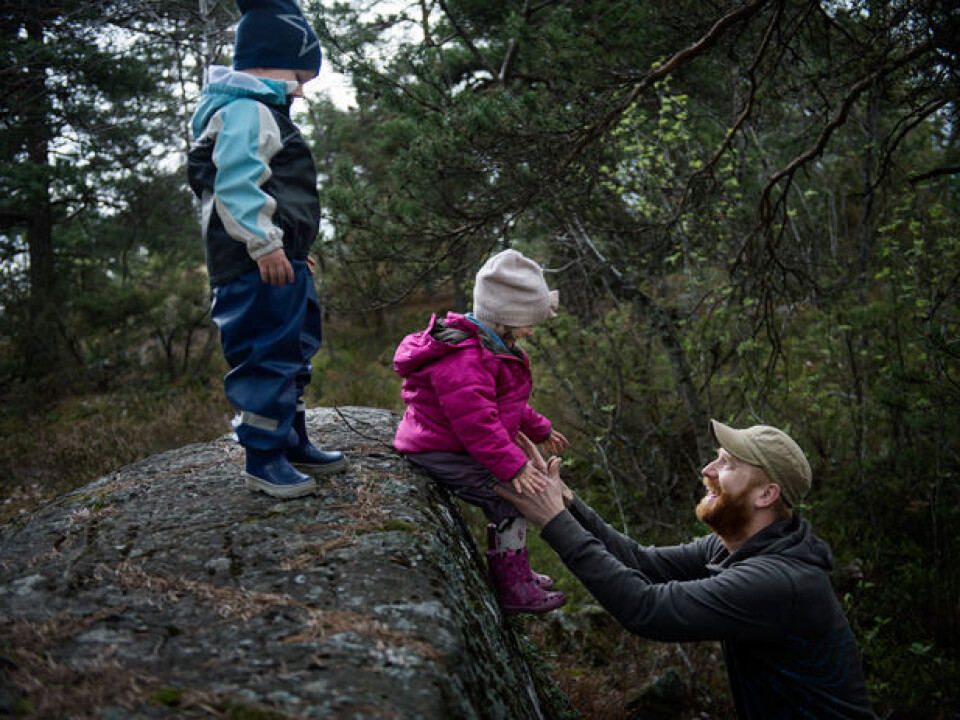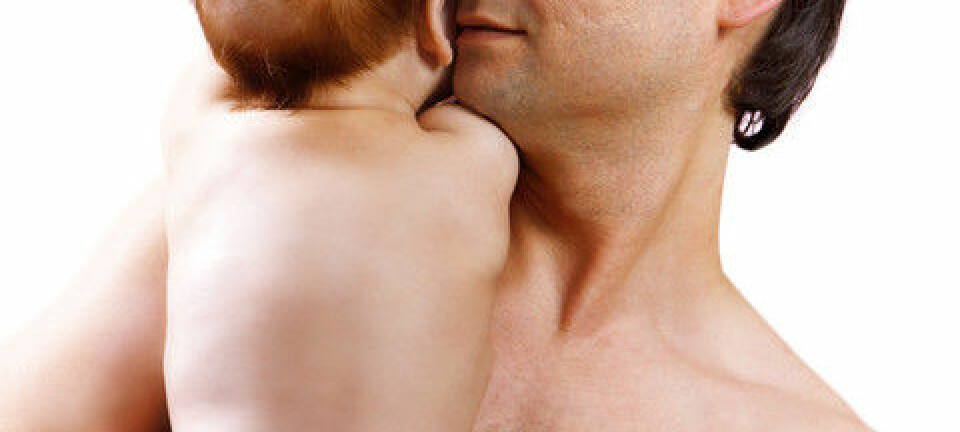This article was produced and financed by Oslo Metropolitan University

Day-care children benefit from risk in play
Researcher believes day-care centres are becoming increasingly fearful about something going wrong.
Denne artikkelen er over ti år gammel og kan inneholde utdatert informasjon.
Day-care centres are cutting away the lowest branches on trees to prevent children from climbing them, play surfaces are being softened, and stones and roots removed from playgrounds.
At the same time, injury statistics show that children in Norway have never been safer.
Ninety-eight percent of injuries in Norwegian day-care centres require no more than basic treatment, and very few require further medical attention. These are the findings in a report from Queen Maud University College of Early Childhood Education.
Criticizes playground safety inspectors
"Playground safety inspectors who enforce the regulations for safety of playground equipment in day-care centres lack insight into children's needs for risk-taking play and physical challenges. It's the kindergarten teachers that are the experts in these areas," says Henrik Rosted Neegaard in HiOA's early childhood education programme, who recently published a book on outdoor activities in day-care centres.

The book, entitled "Outdoor Recreation and Outdoor Life in Day-Care Centres" (In Norwegian: "Friluftsliv og uteliv i barnehagen"), is intended for use on future syllabuses for kindergarten teachers.
"We want this book to highlight the professional role of kindergarten teachers and their responsibility to ensure that children are given the opportunity to experience challenges in outdoor play. Not all day-care centres provide opportunities for risk-taking and physical challenges in outdoor environments," says Neegaard. This is something he wants to address. The book is based on research findings and provides a scientific basis for arranging trips.
Tree-climbing is healthy
"A conscientious and professional kindergarten teacher will choose a terrain and environment that accommodates different types of outdoor activities, both risk-taking play in natural environments and relaxing outdoor play," says Neegaard.
"Children benefit from being able to do both of these. There should be something for every child, from whittling sticks to climbing hills," he says.

This is something he emphasizes in his classes on physical education in the early childhood education programme at HiOA.
For example, he sees tree-climbing as one of the best things children can do, both for the experience itself and for physical and motor development.
Must not overprotect children
"Children are physical beings, and they experience the world through their bodies. Children who are not exposed to risk nor given opportunities to test their boundaries will be incapable of taking risks," says Neegaard.
"This involves finding the right balance, and good kindergarten teachers know how to do that. The easiest option for kindergarten staff is to say "No, that's dangerous," but overprotecting children can produce anxious children who don't know how to deal with their surrounding environment."

"Another thing is that their movement environment can prove so boring that children will take far greater risks on, for example, playground equipment, than they are capable of."
Neegaard suspects that it is often easier to say no because staff are uncertain about the consequences and of how parents will react if something goes wrong. There may be uncertainty about what responsibility the day-care centres have.
Calls for wider debate
Stories on safety in day-care centres are often reported in the tabloid media.
Neegaard cites the biggest Norwegian newspaper's investigative story on day-care centres as an example of sensationalist journalism that does little to widen the debate.
"The stories mixed fact with fiction, linking minor, insignificant errors to deaths. I hope that such a debate could deal more with the balance between safety and the benefits of risk-taking."
"It's important to have good procedures, professional and attentive kindergarten teachers, a supportive management, and close dialogue with parents," says Neegaard.
"Although injuries that are due to poor procedures are indefensible, no one can fully protect themselves against accidents that can easily happen," he adds.

































